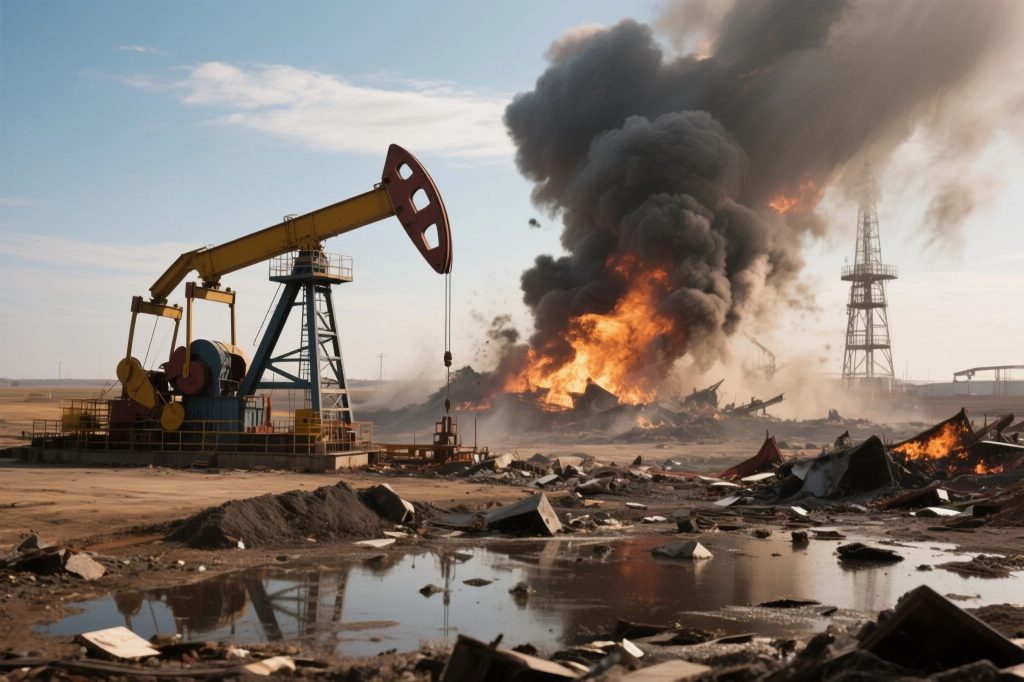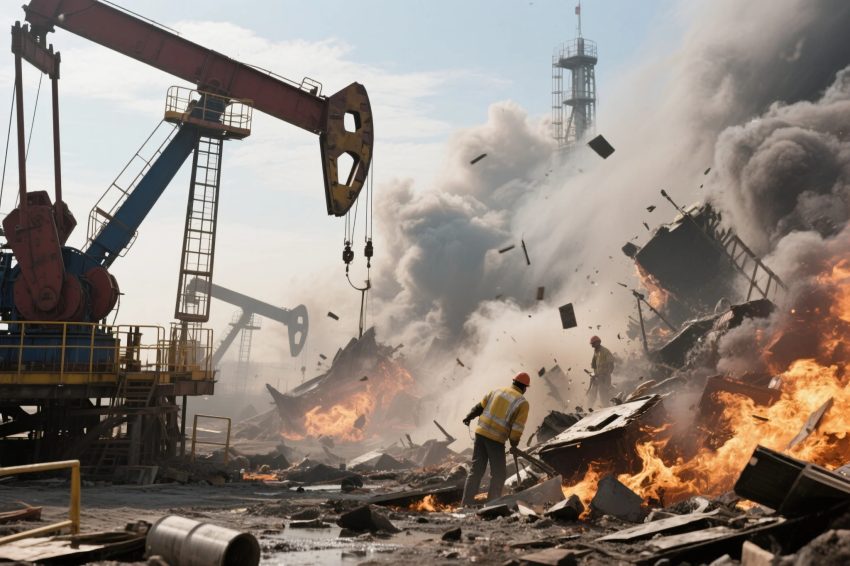The oil and gas industry in the United States is a cornerstone of the national economy, powering everything from transportation to manufacturing. Yet, it is also one of the most hazardous and capital-intensive sectors, with risks that can lead to catastrophic losses if not properly managed. oil and gas insurance has become an essential tool for companies operating in this space, providing a safety net against the unique exposures faced by exploration, production, and service firms. In 2025, the landscape of oil and gas insurance is shaped by evolving regulations, technological advancements, and the increasing complexity of global energy markets. Companies must navigate a web of risks, from environmental liabilities and equipment failures to geopolitical instability and cyber threats. The right insurance policies not only protect physical assets and personnel but also ensure business continuity in the face of unforeseen disasters. For industry leaders, understanding the nuances of oil and gas insurance is not just a matter of compliance—it’s a strategic imperative that can mean the difference between survival and insolvency. By investing in comprehensive coverage, businesses can safeguard their operations, protect their reputations, and position themselves for long-term success in a volatile industry.
Offshore Drilling Insurance: Navigating the Depths of Risk
Operating offshore presents a unique set of challenges and risks that require specialized insurance solutions. offshore drilling insurance is designed to address the complex exposures associated with drilling platforms, subsea equipment, and marine operations. In 2025, the stakes are higher than ever, with stricter environmental regulations, increased scrutiny from stakeholders, and the ever-present threat of natural disasters. Offshore drilling insurance provides coverage for property damage, well control incidents, pollution liabilities, and crew injuries, among other risks. The best policies offer flexible limits, rapid claims response, and access to expert risk management resources. For companies engaged in offshore exploration and production, having robust insurance is not just a regulatory requirement—it’s a critical component of operational resilience. By partnering with insurers who understand the intricacies of offshore operations, businesses can mitigate financial losses, maintain compliance, and protect their investments in some of the world’s most challenging environments. In an industry where a single incident can result in billions of dollars in damages, offshore drilling insurance is an indispensable safeguard for long-term viability.
Energy Sector Insurance: Comprehensive Protection for a Dynamic Industry
The energy sector is undergoing a period of rapid transformation, driven by technological innovation, shifting consumer demands, and the global push for sustainability. energy sector insurance provides comprehensive protection for companies across the value chain, from upstream exploration to downstream distribution. In 2025, energy sector insurance policies are evolving to address emerging risks such as cyberattacks, supply chain disruptions, and regulatory changes. The best insurers offer tailored solutions that combine traditional property and casualty coverage with specialized endorsements for environmental liabilities, business interruption, and equipment breakdowns. For oil and gas companies, energy sector insurance is a strategic asset that enables them to pursue new opportunities, manage complex projects, and respond effectively to crises. By staying informed about industry trends and working closely with experienced brokers, businesses can ensure that their coverage remains aligned with their evolving risk profiles. In a sector where innovation and risk go hand in hand, energy sector insurance provides the stability and confidence needed to thrive in a rapidly changing landscape.
Hazardous Industry Insurance: Managing Extreme Risks with Precision
The oil and gas industry is classified as a hazardous sector due to the inherent dangers associated with exploration, extraction, and processing activities. hazardous industry insurance is specifically designed to address the extreme risks faced by companies operating in this environment. In 2025, hazardous industry insurance policies offer coverage for a wide range of exposures, including explosions, fires, toxic releases, and catastrophic equipment failures. The best policies provide access to specialized risk engineering services, crisis management support, and rapid claims settlement. For oil and gas companies, hazardous industry insurance is more than just a financial safety net—it is a critical component of their overall risk management strategy. By investing in comprehensive coverage and implementing robust safety protocols, businesses can reduce the likelihood of incidents, minimize financial losses, and protect their employees and communities. In an industry where the margin for error is slim and the consequences of mistakes are severe, hazardous industry insurance is an essential tool for managing risk and ensuring long-term sustainability.

Rig Insurance USA: Protecting the Backbone of Oil and Gas Operations
Drilling rigs are the backbone of oil and gas operations, representing significant investments in technology, equipment, and personnel. rig insurance USA provides specialized coverage for drilling rigs operating onshore and offshore across the United States. In 2025, rig insurance policies are designed to address the unique risks associated with rig operations, including equipment breakdowns, blowouts, fires, and third-party liabilities. The best insurers offer flexible coverage options, rapid claims response, and access to technical experts who understand the complexities of drilling operations. For oil and gas companies, rig insurance is a strategic asset that enables them to maintain operational continuity, protect their investments, and respond effectively to emergencies. By partnering with insurers who have deep industry expertise, businesses can ensure that their rigs are protected against the full spectrum of risks they face in the field. In a sector where downtime can result in millions of dollars in lost revenue, rig insurance USA is an indispensable tool for safeguarding profitability and ensuring long-term success.
The Future of Oil and Gas Insurance: Trends and Best Practices for 2025
As the oil and gas industry continues to evolve, so too does the landscape of oil and gas insurance. In 2025, companies must stay ahead of emerging risks, regulatory changes, and technological advancements to ensure that their insurance coverage remains effective and relevant. The integration of digital tools, such as predictive analytics and remote monitoring, is transforming the way companies assess and manage risk. Insurers are responding by offering more flexible, customizable policies that address the unique needs of modern energy operations. Best practices for 2025 include conducting regular risk assessments, maintaining open communication with insurance providers, and staying informed about changes in regulations and industry standards. Companies should also prioritize ongoing training and education for their teams, ensuring that everyone is aware of the latest safety protocols and risk management techniques. By adopting a proactive approach to insurance and risk management, oil and gas businesses can position themselves for long-term success in a rapidly changing industry. The future of oil and gas insurance is one of innovation, adaptability, and resilience, and those who embrace these principles will be best equipped to thrive in the years to come.
